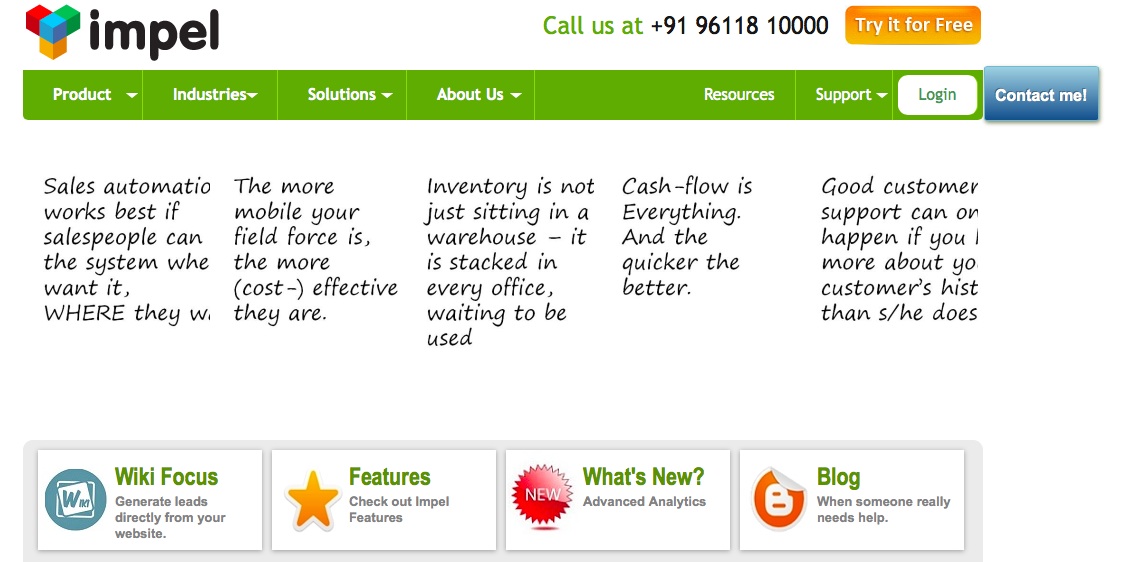Main reason behind choosing a CRM (Customer Relationship Management) & lead management software is to cut down the sales time and add to the quality of client service. With a well equipped CRM & lead management system, customer relations would improve and the process of customer tracking is going to get efficient. Due to this, one would notice that the number of delays would be less and sales visibility would improve manifold. With all the sectors in India such as health care, financial, retail and pharmaceutical considering CRM and lead management systems, it gets imperative to know about the various available options.
- CRMNEXT: CRMNEXT is a responsive software designed to satisfy numerous goals like enhancing customer contentment and loyalty, affording your sales, management, marketing and service providing teams with thorough easily accessible information, manage, track and focus performance indicators like profitability, customer share, market-share, revenues and cross-market reports. This software is used in finance, banking, insurance, mutual fund, telecom, pharma, retail and multimedia sectors.
- Dquip: This lead management software would be of great help in lead acquisition, routing, prospecting and closure. The features that make it a wonderful pick are ability to add leads online, lead delegation, lead tracking, reminders via SMS and email and detailed reporting. Dquip lead management software consists of cloud as well as clients online servers.
- ImpelCRM: This software not only covers lead management but goes beyond touch marketing too. This is a Cloud + Mobile CRM that promise to help in many areas such as lead generation, order processing, collections, inventory management, and customer support. Striking features of this software include field reporting, e-coupon management, inventory management, email integration and advanced reporting. This is available in both mobile and web versions.
- Kreato CRM– Kreato CRM is a comprehensive cloud software solution that manages multiple aspects like managing numerous leads and inquiries, marketing campaigns like SMS and Emails, SFA(Sales Force Automation) – account conversion, generating analytical reports, arranging, planning and tracking customer support tasks and communicating with customers via inbound and outbound calls. The other notable features are business apps and integration apps.
- Lead Prime: This simple to configure and highly integrated software comes in a ready to use mode. It is going to make it possible to track down the leads, would provide timely alerts and help bring improvement in the lead conversion ratio. Some interesting features that set it apart from others are, ease of use, fully automated processing, customizable, and easy to integrate. Lead Prime is available in both web and mobile versions.
- Leadsquared: This comprehensive lead management software would help one in areas such as lead acquisition, verification, routing and sales closure. Some of the features that add to the worth of this software are website visit tracking, lead scoring, email tracking, activity history, advanced search, dynamic and static lists, reminders, task updates, and social profile support. Available via SAAS model, this software surely promises to bring in efficacy in the order tracking and routing processes.
- Sales babu– Sales babu is integrated CRM (Customer Relationship Management) software that is hosted on cloud. Being on cloud offers the advantage that it can be operated from anywhere in the world. The data can be accessed, stored and analyzed irrespective of your location. The perks of using this software is that you can monitor the employee’s sales leads, check whether they are achieving the targets and likewise analyze and predict sales, implementation of strategies and carry out the successive planning. You can also sort qualifying leads, acquire a large amount of customer related information, collect the inquiries and manage various contact details of customers.
- SalesWah – Saleswah is specially designed for small and medium scale businesses and comes at affordable rates. The main highlights of this software are that it is user-friendly, innate app that has excellent functionality. Striking features of Saleswah include: easily operable by all and doesn’t need technical help, digs into customer interaction history and tells you where to focus, lets you customize your logo, email, time an currency settings and integrates data across Google apps and Microsoft Outlook.
- Winds CRM – Cloud based Winds CRM is mainly designed to grow organizations and is useful to both the sales and management teams. It performs a plethora of activities like managing multiple solutions like lead, clients, contacts, tsk management, team organization and product analysis, information and reporting. In the sales department it performs these functions: it helps tract leads that are created, qualified and promoted via numerous pipelines, sales staff can enter relevant information, update and track relevant opportunities thus making the entire process transparent, generating invoices against sales order and automation of the invoice generation proposal within seconds. In the marketing sector, Winds CRM is used for search based marketing for cross selling among customers and manage and orchestrate different campaigns to increase the output efficiency.
- Zoho CRM– A complete eagle-eye view about your entire sales cycle is provided by Zoho CRM. The key areas in which it makes your managing simpler is by automating the data so that you can lay emphases on selling, tracks your sales activity by displaying the sales cycle thereby helping you align your goals and strategies and it is mobile responsive. Add-ons include: connecting with your customers from within your CRM account, synchronizing your CRM account with other applications to increase the scalability of your business solution and you can integrate Gmail with CRM.
Any of these CRM and lead management systems can be considered after evaluating order processing, customer relation and order tracking needs. Depending on the business process, any of these variants can be put to work.
For any more queries or confusion about the SAAS based software, feel free to contact us.


